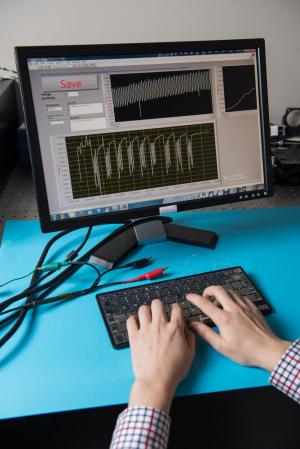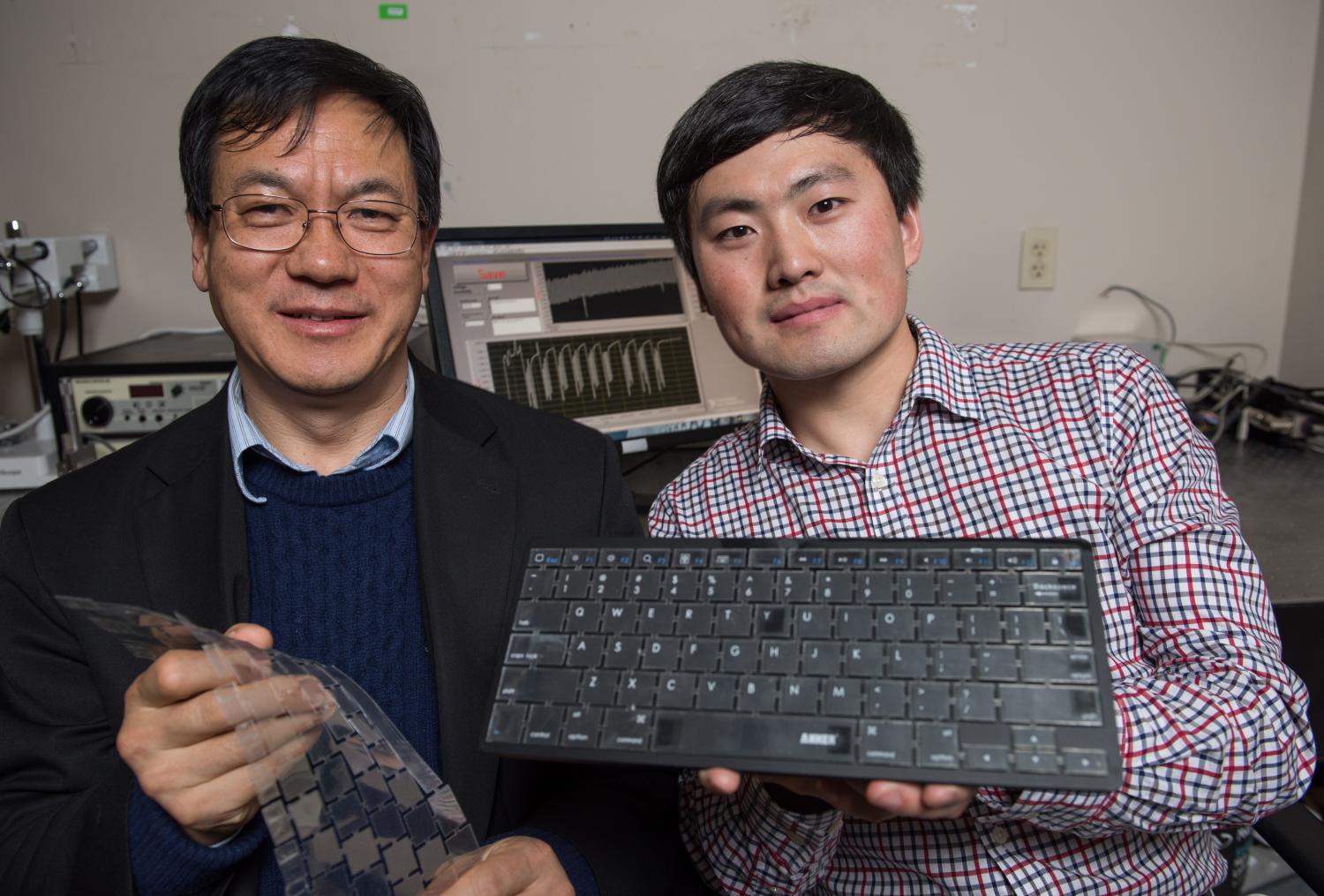Intelligent Keyboard Secures Biometric Password, Charges Portable Devices With Human Electricity

Security is always an issue on PCs, and we all do our best to ensure that our information is secure as possible, but sometimes it's not enough. A group of researchers at the Georgia Institute of Technology are looking into changing that by creating a keyboard that only responds to your unique electrical patterns.
The project started four years ago with the initial goal of making a keyboard that could create energy to power other devices. Along the way, the team discovered that the same technology could also be used as a biometric password for each user.
The intelligent keyboard, or IKB as the researchers call it, is actually just four pieces of film materials stacked on top of each other that house and conduct electricity. These four layers are not exclusive to the keyboard used by the team, because they can easily be attached to any regular keyboard.
According to Dr. Zhong Lin Wang, a member of the development team and Regents' Professor at the Georgia Institute of Technology, the user creates a current when touching the key and sends it through the layers to create an electric charge. The way this works for security purposes is that each user's typing pattern corresponds to voltage and current, which are unique signals for each person. The signals further translate into more detailed information for each user, such as the time between two character inputs, finger size and bioelectricity.
According to an article published by the team in December, they tested the device on 104 people and split them into two groups: 52 "clients" and 52 "imposters." The clients would provide the password by typing the word "touch" more than four times on the IKB, and the imposters would try to gain access by typing the same word. The results showed that the keyboard was nearly successful in detecting the real user against potential thieves with a low error rate of 1.34 percent.
An additional test showed that when four subjects tried typing the word "touch" on the IKB, only one of the four subjects, the "owner" of the keyboard, was able to access the computer.

Even with this discovery, the team was still able to complete its initial goal of using the keyboard to power other devices. This is because the contact between each finger and key produces large amounts of electric charges, and the nanowires in each key have a large contact area and are able to handle the large transfer of charges. Anyone with a typing speed of more than 100 characters per minute can use the keyboard to charge portable devices, and there is also a correlation from the study showing that a faster typing speed quickens the charging process.
Stay On the Cutting Edge: Get the Tom's Hardware Newsletter
Get Tom's Hardware's best news and in-depth reviews, straight to your inbox.
Wang said that the team is still in the first phase of development. If someone is willing to invest in the development process, he believes that the keyboard will hit the market in about two years. Considering the many methods of biometric security available today, the IKB is a unique approach to security. At its current stage it shows promise, but without investors, it's unclear as to whether or not we will see this technology widely used in the near future.
Follow Rexly Peñaflorida II @Heirdeux. Follow us @tomshardware, on Facebook and on Google+.
-
kapitalistas just in case you dont know .the more you try to secure everything the more aggressively they try brake in.no offense just saying.Reply -
everlast66 If this keyboard drains my electricity, wouldn't I feel totally drained after an hour or two working on this keyboard?Reply -
derekullo Even physical resistors change over time. They are sold with tolerances.Reply
I would imagine a person's resistance would change over time as well.
Get a cut on your arm, resistance of your arm changes.
Try a new moisturizer, the resistance of your hand changes.
If your body is cold and outputs a millivolt less than the current will change
It would be amazing if they found a way to do it but ohm's law applies for everything in nature. You don't have your own personal "Current Rating".
If the resistance changes then current changes as well.